Alcohol Use Disorders on the Rise in the U.S.
It seems like the U.S. has always had a rocky relationship with drugs and alcohol. Alcoholism in America became enough of a problem in the 19th century that it fueled a fiery temperance movement that ultimately resulted in Prohibition in 1920.
In the 1980s crack cocaine became public enemy #1. During the 90s, crystal meth became a major focus in America’s war on drugs. Today it’s the opioid epidemic that dominates the national conversation on addiction and drug and alcohol rehab.
But, amidst the chaos and tragedy of widespread opioid addiction, millions of Americans are still living with alcohol use disorders (AUDs) and AUD rates in America are steadily climbing. As a leading provider of alcohol abuse treatment, Cottonwood Tucson is determined to raise awareness about this troubling trend and present solutions.
What We Know About The Rise of Alcohol Addiction in the U.S.
The data is incontrovertible. We know that Americans are not only drinking more, but more of us are becoming addicted to alcohol. After a long, steady period of decline in alcohol consumption, the trend has shifted in the opposite direction.
The NIAAA says the average American now drinks the equivalent of 2.5 gallons of ethyl alcohol annually. That represents an increase of almost 25% compared to the 1990s and put us on par with alcohol consumption rates during the Civil War.
Just a few of the data points that have alcohol treatment centers worried include:
- The number of alcohol-related deaths in the U.S. doubled between 1999 and 2017 and now sits at over 70,000 deaths a year.
- Between 1999 and 2016 the number of cirrhosis deaths in America has increased by 65%.
- More than 25% of Americans said they had increased their drinking in response to stress per a 2021 survey conducted during the height of the COVID-19 pandemic.
When Does Drinking Become an Alcohol Use Disorder?
While there aren’t strict guidelines that define where alcohol addiction begins, the National Institute on Alcohol Abuse and Alcoholism (NIAAA) defines “heavy drinking” as 4 drinks daily or 14 drinks a week for men and 3 drinks a day or 7 drinks a week for women.
However, it is important to understand that an alcohol use disorder is about more than the quantity of alcohol a person drinks. Alcohol use disorder treatment focuses on thinking, behavior, and a person’s relationship with alcohol.
Some signs that a person may have an alcohol use disorder include:
- Drinking interferes with sleeping, eating, hygiene, or daily routines.
- Work or school performance is directly impacted by alcohol use.
- Experiencing negative physical and/or mental health effects tied to alcohol use.
- An inability to reduce or stop drinking, even in the face of serious consequences.
- Feeling compelled to drink before engaging in other activities, i.e. socialization.
Only a medical professional can formally diagnose an alcohol use disorder, but if you or someone you love is experiencing one or more of the above, it’s time to ask for help. The compassionate professionals at Cottonwood Tuscon are here to listen and help 24 hours a day, 7 days a week at (888) 433-1069. Please don’t hesitate to call if you have any questions about alcohol rehab, recovery from alcoholism, or mental health treatment.
Why is the Rate of Alcoholism in America Climbing?
It’s not just the increase in alcohol consumption that’s at issue. It’s also the way in which Americans drink. According to a study published in JAMA (the Journal of the American Medical Association) more than 20% of U.S. deaths in adults aged 20 to 49 can be attributed to alcohol.
Alcohol has always been a part of our culture, but here we tend to over-indulge more than most Western countries are known to do. The rate of alcohol consumption has risen and fallen over the decades, but this most recent rise is accompanied by more alcohol misuse than we’re usually prone to.
Why are more Americans drinking more and developing alcohol use disorders now? Direct causes vary widely from person to person and can be difficult to pinpoint. But clinical research and surveys suggest several factors may be contributing to the rise in alcoholism in America.
They include:
- A continuation of the uptick in alcohol consumption that began during the COVID-19 Pandemic.
- Rising inflation, housing prices, rent, cost of living and other economic concerns.
- A rise in mental health disorders and people reporting increased general stress and anxiety.
- Social divisions caused by political, religious, and cultural issues in the U.S. reaching a boiling point.
Women and Alcohol Use Disorders
While the number of men with alcoholism outnumbers women by about 2-to-1, several indicators, including a 2015 study by the NIAAA, show that women are narrowing this gap. The COVID-19 pandemic and the isolation it brought about may be a significant contributor to this phenomenon.
Several other metrics concerning women and alcohol consumption have raised red flags in recent years. One survey done in 2021 found that women who drink are consuming as much as 50% more wine during the pandemic than they were in the years preceding it. Research also shows that alcohol-related deaths in women are rising.
Men and women alike often turn to drugs or alcohol for stress relief and there is no shortage of stressors at the moment for many of us. The waning pandemic, inflation and division over cultural and political issues have all raised the emotional temperature for Americans as a whole in recent years.
Cottonwood Tucson: A Healing Retreat for Alcohol Use Disorders
Cottonwood Tucson has been the Southwest’s premier alcohol treatment center for over 25 years. Our secluded campus sits on 35 beautiful acres in the Sonoran Desert foothills. If you or someone you love could benefit from the exemplary care and innovative treatment Cottonwood is famous for, reach out to us anytime, 24 hours a day at (888) 433-1069.






